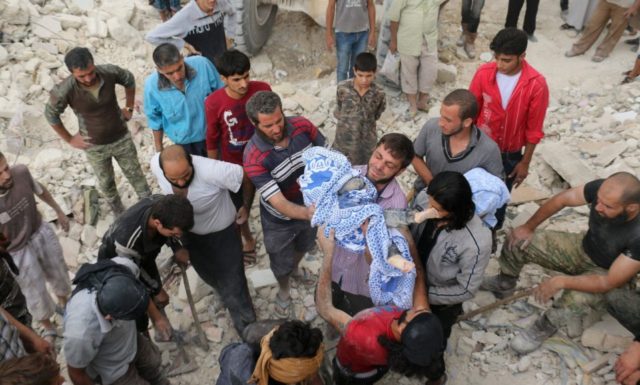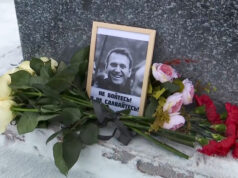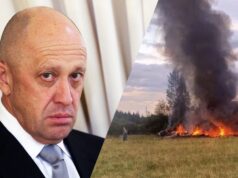More than 250,000 people are stuck in Aleppo where rebel forces and everyone else are pounded by Syrian government and Russian air forces. Hospitals are a prime target and a Red Cross aid convoy was destroyed; both are war crimes. Conditions are beyond abysmal – you can find heart rending video and print descriptions everywhere on line. Syrians and others are begging for help for the besieged. The U.S. response has been to beg the Russians for another cease fire and more aid convoys.
Secretary of State John Kerry described the problem. “The cause of what is happening is Assad and Russia wanting to pursue a military victory. Today, there is no cease-fire and we’re not talking to them right now. And what’s happening? The place is being utterly destroyed. That’s not delusional. That’s a fact.”
Yes, it is a fact. The Russian President Putin is, in fact, looking for a military victory – to end the war on his terms by defeating the enemies of the government in Damascus. Smash anything and everything that gets in the way. This is the man who admitted to 160,000 Chechen deaths in his own country, where the mottos was, “kill them, level them, and kill their children” as he pounded them into at least temporary silence.
Here is another fact. The U.S. is very good at helping the victims of natural disasters (think Haiti and the Japanese tsunami) because there is no moral conundrum, but we have a tremendous problem in Syria because there is one. President Obama defined the American position as, “seeking peace,” but the U.S. has been funding and fomenting war in Syria for years.
Bashar Assad has been the dictator of Syria since 2000 as was his father before him. For most of that time, the U.S. was willing to talk with him and even work with him to “control terrorism,” as al Qaeda and later ISIS forces crossed the border from Syria to Iraq. He was famously called a reformer by then-Secretary of State Hillary Clinton. Then-Senator Kerry called him a “man of his word.”
But in 2012, President Obama changed America’s mind, inserting us into Syria’s war. He issued a (temporarily) secret intelligence finding that allowed the CIA to begin working with the military opposition to Assad. U.S. training for the rebels coincided – oddly or not – with weapons shipments from post-Gaddafi Libya to Syria via Turkey or Lebanon that were openly reported in the press at the time. Funding came from Qatar and Saudi Arabia, among others. Also in 2012, the U.S. “reconfigured” the opposition by withdrawing recognition from the Syrian National Council and setting up a new group that was presumed to be more to our liking.
In fact, the administration probably did just enough to gin up the war, to encourage the opposition – some of which was, in fact, moderate, and much of which was, in fact, radical jihadists aligned or not with al Qaeda – to believe it could win. But not enough that it actually could win. Then-Secretary Clinton said in 2012 that she was “incredibly sympathetic to the calls that somebody do something” but that “sometimes, overturning brutal regimes takes time and costs lives. I wish it weren’t so.”
In 2013, the State Department publicly announced it was approving funds for “non-lethal aid” to “moderate rebels.” Congress approved additional aid in 2014. TOW anti-tank missiles were supplied in 2015, raising the level of sophistication and lethality of weapons supplied to the rebels, while MANPADS were denied to them.
All along, we were talking to the Russians, who continued to insist that Assad was the only legitimate ruler of Syria and who provided the military mainstay of Assad’s support. We cooperated with Putin when it suited us and him, as it did when both agreed they had eliminated Assad’s chemical weapons arsenal.
So we come to 2016 and the civilian crisis in Aleppo that is also a military crisis. If the rebels lose Aleppo, they will have lost their primary land base in northern Syria; the victory for Assad, Russia, Iran and Hezbollah will be huge. The defeat for the rebels we have armed and trained will be correspondingly huge. As reported in the Washington Free Beacon, a Reuters reporter asked State Department Spokesman Mark Toner why the United States government has not acted:
“‘What makes Aleppo different from the Yazidis who were on Mount Sinjar, from the Libyans who Gaddafi said he was going to hunt down like rats? What’s the difference here?’ Mohammed said. ‘You have 250,000 people in a defined area that are now surrounded, that are subject not just to air but now to ground assault. Why did the United States deem it to be in the U.S. national interest to intervene in those other circumstances but not in this circumstance?'”
Toner said he does not like comparing different situations.
Let us do it then. The Yazidis were under siege by ISIS, the avowed enemy of the U.S. and our Kurdish allies. Providing air power to help the Kurds was an easy decision. But if we decide to protect the people of Aleppo, we have to be prepared to fire on their attackers, the Syrians and/or the Russians, our sometimes partners. A “no fly zone” means we have to shoot down planes that violate it. A “safe zone/haven” means we have to shoot anyone who enters it. We can’t protect the people of Aleppo from their enemies without killing their enemies with/for them.
This would surely end Secretary Kerry’s quest for a Russian-managed cease fire and President Obama’s quixotic quest for “peace.”






